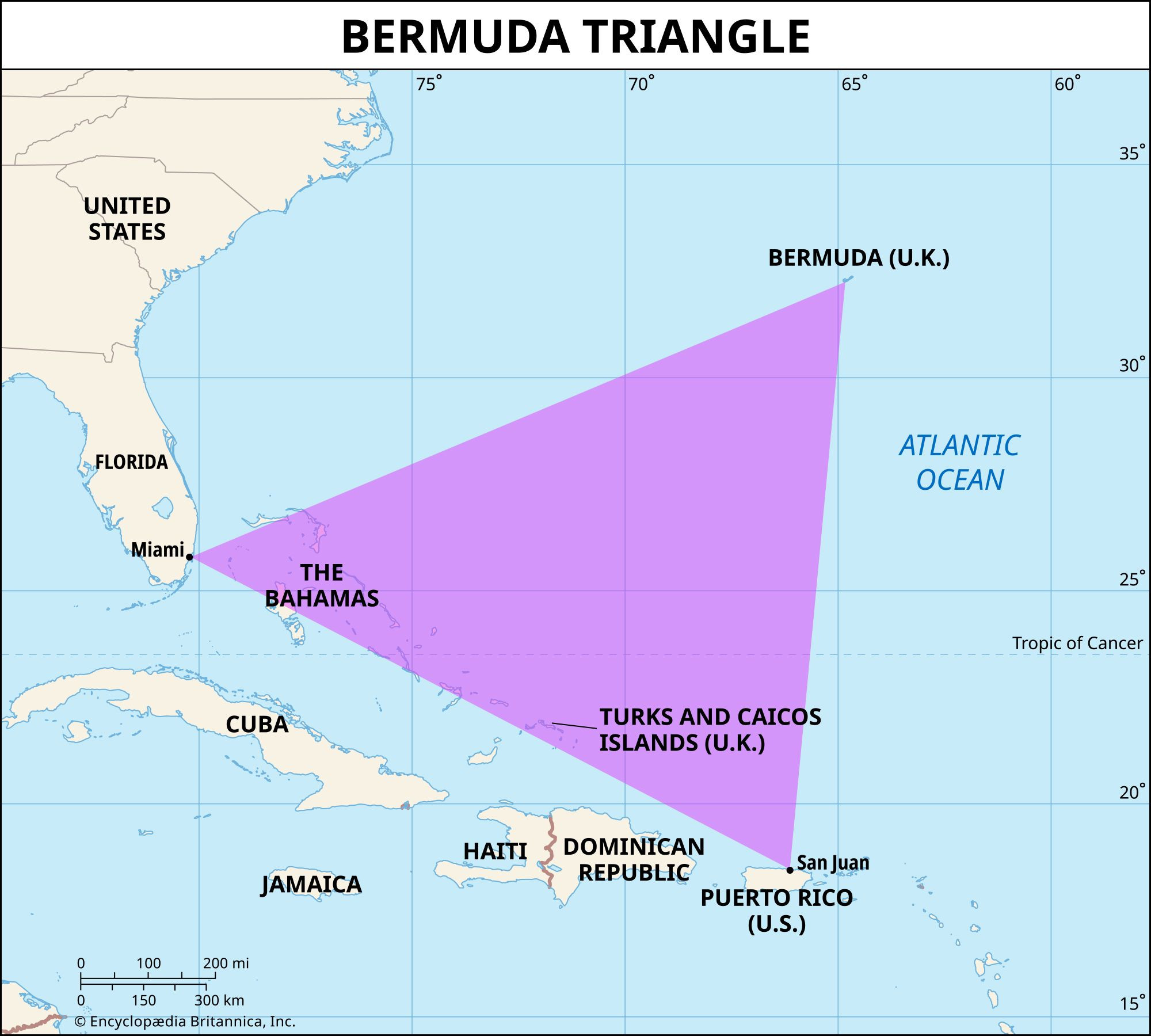The Bermuda Triangle, a name synonymous with mystery and unexplained disappearances, continues to intrigue and baffle. But Where Is A Bermuda Triangle actually located? Often shrouded in legend, pinpointing its location is the first step to understanding the facts behind this infamous area.
 Map of the Bermuda Triangle highlighting its location in the western North Atlantic Ocean
Map of the Bermuda Triangle highlighting its location in the western North Atlantic Ocean
Geographically, the Bermuda Triangle is a loosely defined region in the western part of the North Atlantic Ocean. While there’s no universally agreed-upon shape or precise borders, it’s commonly depicted as a triangular area stretching between three points:
- Florida: The southern point anchors near the Atlantic coast of Florida.
- Bermuda: The northeastern vertex is marked by the island of Bermuda.
- Puerto Rico: The southeastern tip extends towards Puerto Rico, part of the Greater Antilles.
This expansive zone encompasses a vast stretch of ocean, with estimates ranging from 500,000 to 1,510,000 square miles (1,300,000 to 3,900,000 square kilometers). It’s important to note that the “triangle” is more of a conceptual area than a precisely surveyed geographical feature.
Delving into the Bermuda Triangle’s Mysterious Reputation
For centuries, the Bermuda Triangle has been associated with unusual incidents. Reports of ships found adrift and abandoned, vessels vanishing without a trace, and aircraft disappearing from radar screens have fueled the area’s mystique. Some notable cases include the disappearance of the USS Cyclops in 1918, a massive naval vessel lost with all hands, and numerous other ships and planes that have seemingly vanished within its boundaries.
 USS Cyclops pictured in the Hudson River, a vessel that disappeared in the Bermuda Triangle area in 1918
USS Cyclops pictured in the Hudson River, a vessel that disappeared in the Bermuda Triangle area in 1918
These accounts, often sensationalized, have led to various theories attempting to explain the “Bermuda Triangle mystery.” Supernatural explanations involving paranormal forces or extraterrestrial activity have been proposed, capturing the public imagination. However, scientific inquiry offers more grounded perspectives.
Natural Explanations and Scientific Perspectives
While the legends persist, scientific analysis points towards natural phenomena as likely causes for reported incidents in the Bermuda Triangle. One significant factor is the region’s unique geographical and environmental characteristics.
- Rogue Waves: The Bermuda Triangle is located in an area prone to powerful storms converging from different directions. This confluence can generate rogue waves, exceptionally large and unexpected waves reaching heights of up to 100 feet. Such waves could overwhelm ships and even contribute to aircraft accidents.
- Agonic Line: The area is also influenced by the agonic line, where true north and magnetic north align, resulting in zero magnetic declination. Navigational errors could occur if mariners or pilots didn’t properly account for this variation in earlier times, potentially leading vessels astray.
However, it’s crucial to consider the perspective of reputable scientific organizations. The U.S. National Oceanic and Atmospheric Administration (NOAA) explicitly states: “There is no evidence that mysterious disappearances occur with any greater frequency in the Bermuda Triangle than in any other large, well-traveled area of the ocean.”
In conclusion, while the Bermuda Triangle holds a captivating place in popular culture as a zone of mystery, its location is well-defined within the North Atlantic Ocean. Scientific understanding suggests that natural forces and statistical probabilities, rather than supernatural phenomena, likely explain the reported incidents. Despite its reputation, countless ships and aircraft traverse the Bermuda Triangle daily without incident, highlighting that it is a busy, and not inherently more dangerous, part of the world’s oceans.


